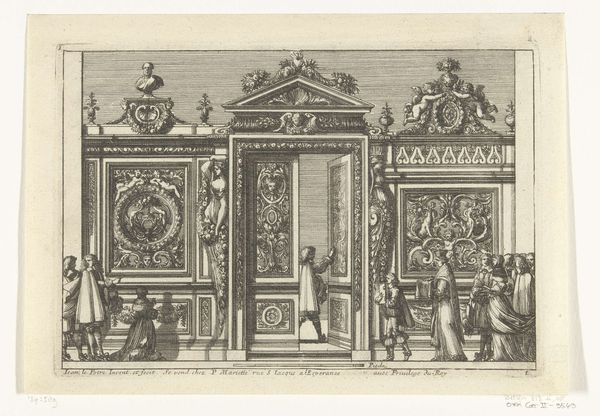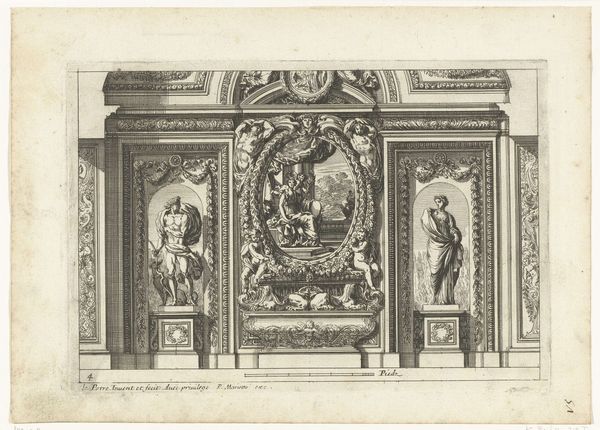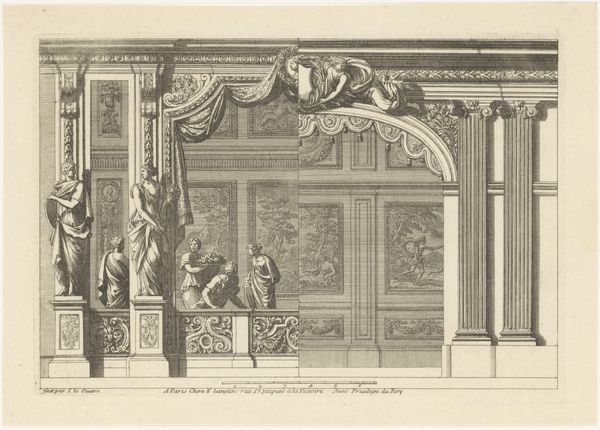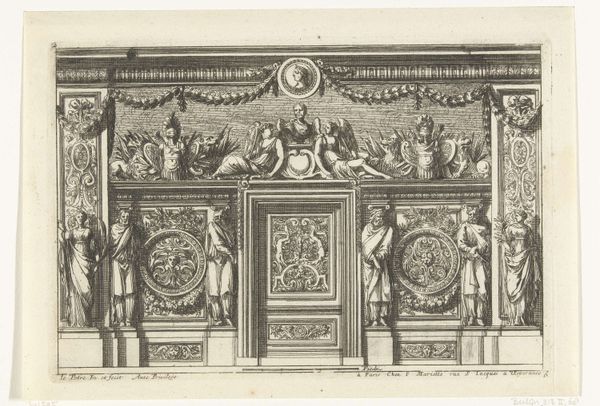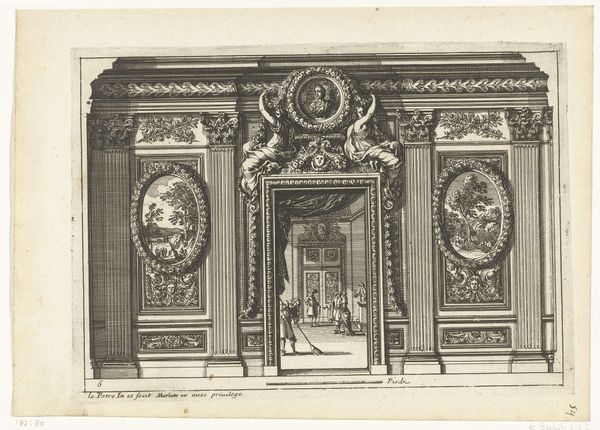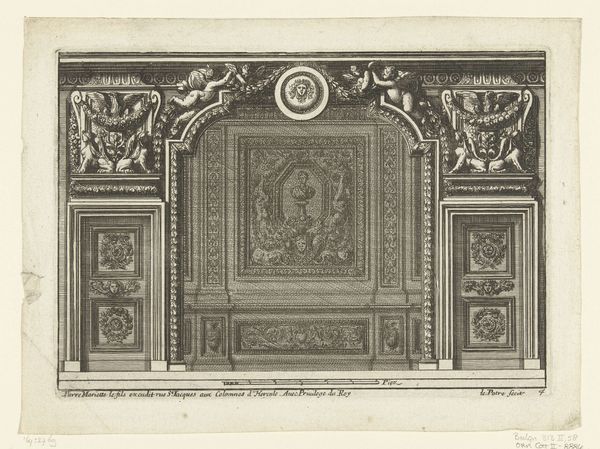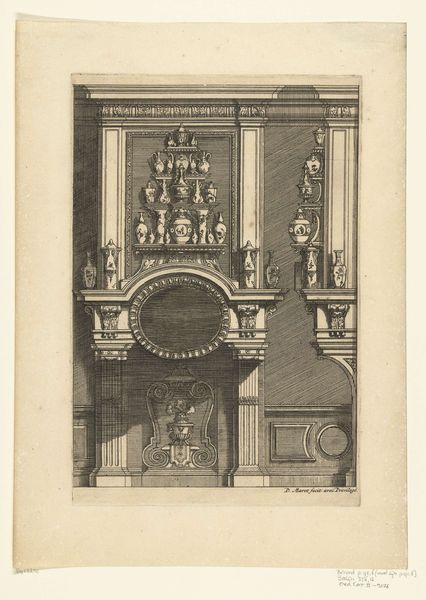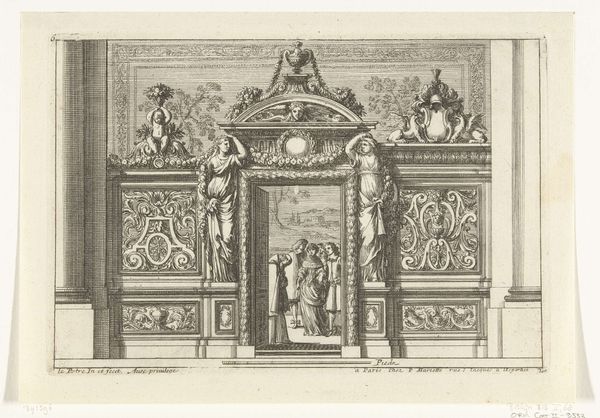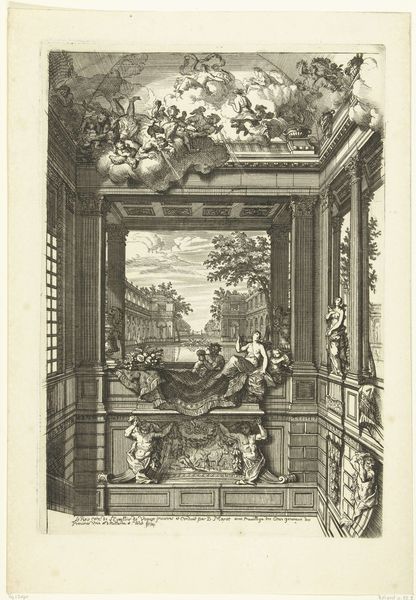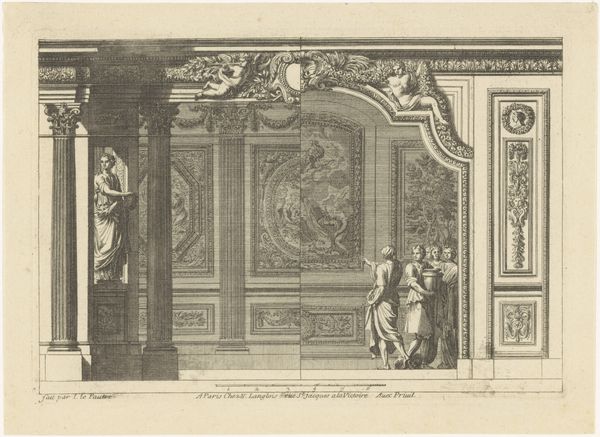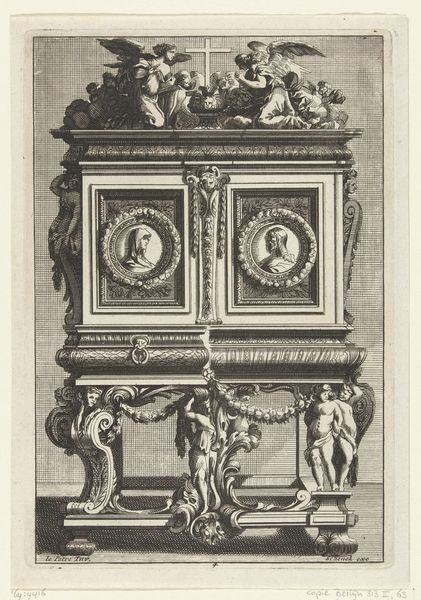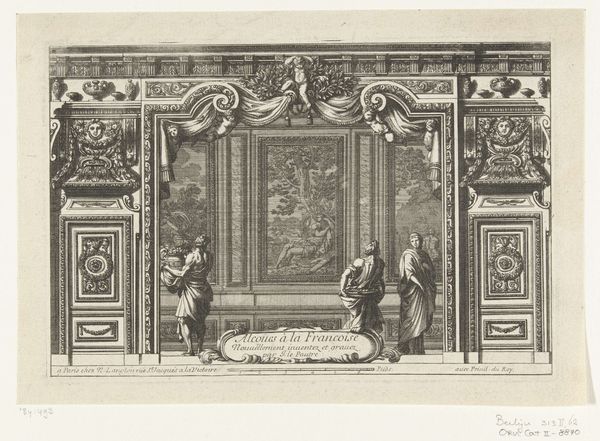
drawing, print, engraving, architecture
#
drawing
#
baroque
#
pen drawing
# print
#
engraving
#
architecture
Dimensions: height 158 mm, width 231 mm
Copyright: Rijks Museum: Open Domain
Editor: This is "Muurdecoratie met variant," a wall decoration design by Jean Lepautre from 1661. It's a pen drawing, engraving, and print depicting an elaborate architectural interior. I’m struck by how this seemingly decorative piece hints at power and privilege. How do you interpret this work beyond its surface level? Curator: This is more than just a decoration; it’s a carefully constructed visual argument rooted in Baroque aesthetics and power structures. Notice the emphasis on symmetry and the classical motifs—busts of leaders, allegorical figures, ornate frames. How might these elements function as statements about authority and social hierarchy? Editor: Well, I suppose the classical busts and symmetrical design would represent a desired connection to Roman imperial power? Is Lepautre, through this design, subtly reinforcing a very specific and exclusive image of authority? Curator: Precisely. Think about where designs like this would be implemented—palaces, estates of the elite. They dictate a certain cultural narrative, excluding those who couldn’t participate in such displays of wealth and taste. In what ways might this idealized image erase other forms of identity and lived experience? Editor: So, it’s not just about beauty or skill, it’s about control, isn't it? Like dictating who has access to beauty and how that affects society’s ideals about leadership. Curator: Exactly. And by dissecting these seemingly benign decorations, we unveil the complex web of power dynamics embedded within the Baroque period. These details reinforce the values and position of a very particular class. Editor: I’d never have considered a wall decoration this way. Now, I see the embedded statements of power it imposes within spaces, instead of just something visually interesting. Curator: Recognizing how design perpetuates specific cultural narratives provides a more comprehensive understanding of art's role in shaping society, and opens critical dialogues about our values.
Comments
No comments
Be the first to comment and join the conversation on the ultimate creative platform.
